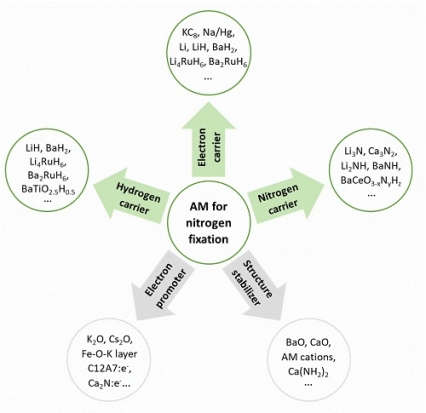Recently, our group published a perspective article on the impact of alkaline (earth) metals on green ammonia synthesis.
Ammonia has attracted much attention as an important hydrogen storage or energy storage carrier. With the increasing depletion of fossil energy and the development and utilization of renewable energy, the transformation and upgrading of the traditional synthetic ammonia industry is imperative. The development of a low-energy green synthetic ammonia process based on renewable energy is not only an effective solution to meet social needs, but also the goal that catalysis researchers have been working hard on for over the past century.

Alkali (earth) metal additives are important components of industrial iron-based or ruthenium-based ammonia synthesis catalytic systems, and their addition can greatly enhance the catalytic activity of active metals. In recent years, many studies on nitrogen fixation and ammonia synthesis have shown that alkali (earth) metals play an important role in the green synthesis of ammonia. Recent research in this field has mainly focused on alkali (earth) metal compounds with high chemical activity, such as hydrides, nitrides, amides, and electron compounds. Unlike traditional alkali (earth) metal oxide or hydroxide additives, these compounds can act as electron carriers, nitrogen carriers, or hydrogen carriers, and play a unique role in the synthesis of ammonia, such as thermal catalysis, electrochemistry, and chemical looping. This article discusses the challenges and future development directions of the application of alkali (earth) metals in the green synthesis of ammonia.
This review was published in Chem under the title of "The Impact of Alkali and Alkaline Earth Metals on Green Ammonia Synthesis". The first author of this articleis Wang Qianru, a doctoral student in our group. The work was funded by the Basic Science Center Project "Air Main Component Conversion Chemistry" of the National Natural Science Foundation of China and the Youth Innovation Promotion Association of the Chinese Academy of Sciences. (Text/Photo by Wang Qianru)
Article link: https://doi.org/10.1016/j.chempr.2021.08.021

 Home
>>
Highlights
Home
>>
Highlights